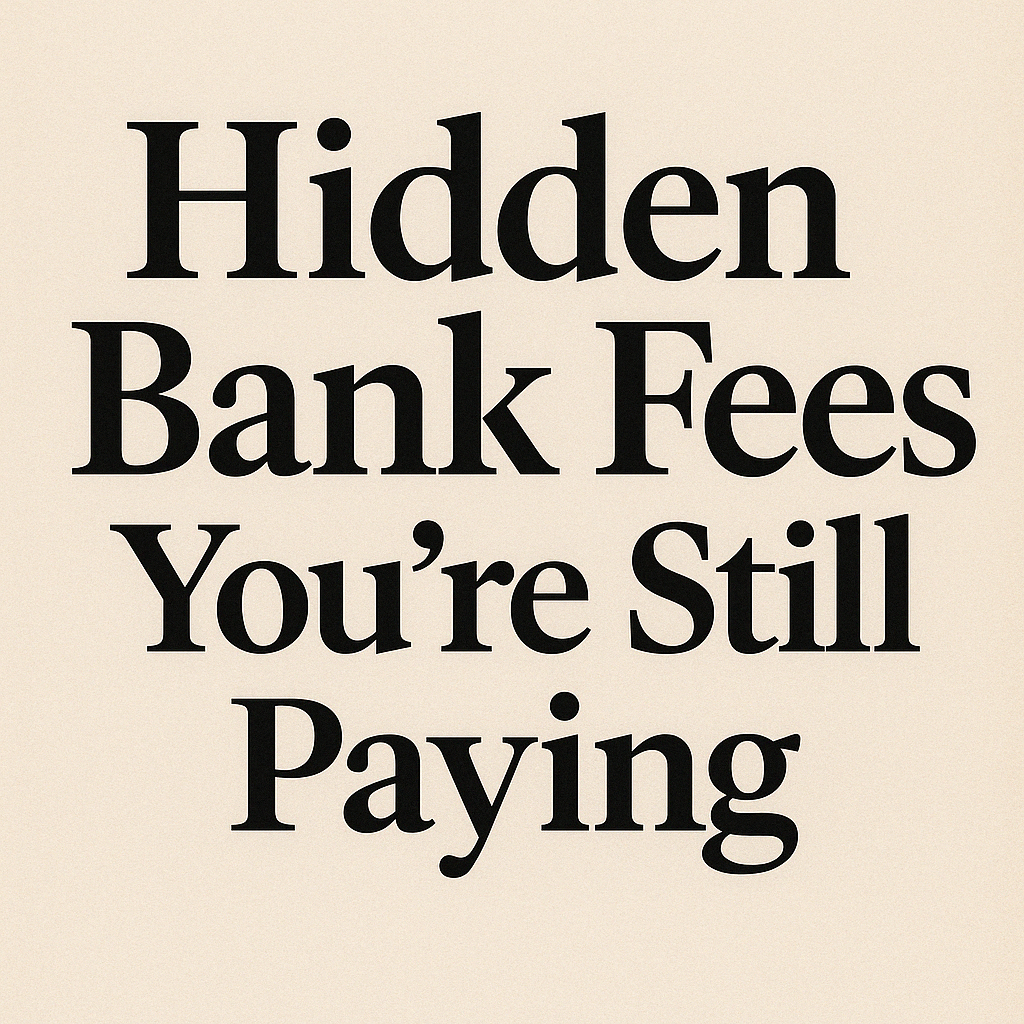A must-read guide for international travelers and digital nomads in 2025
When you think you’re done with fees — no foreign transaction fees, no annual card fees — banks still have a few tricks up their sleeves. Hidden bank fees can sneak up on you when you least expect it, especially if you’re living abroad, traveling long-term, or managing multiple currencies.
Let’s uncover these silent profit machines and show you how to escape them for good.
1. ATM Withdrawal Fees: The Invisible Tax
You withdraw $200 from an ATM overseas and later realize your bank charged you $5, the ATM charged you another $3, and the exchange rate was 2% worse than what Google showed. Sound familiar?
Banks and third-party ATMs often charge:
- Flat ATM usage fees ($2–$5 per withdrawal)
- Percentage-based foreign ATM fees (1–3%)
- Currency conversion markups hidden in poor exchange rates
How to avoid:
- Use banks that reimburse ATM fees, like Charles Schwab or SoFi.
- Withdraw larger amounts less frequently to reduce fee hits.
- Use partner ATMs abroad that your bank supports.
- Avoid Dynamic Currency Conversion (DCC) — always choose to be charged in local currency.
2. Dormant Account Fees: Punished for Forgetting
Some banks charge a “dormancy fee” if you don’t use your account for 6–12 months. If you’re traveling and forget about an old savings or checking account, you could be paying $10–$20 annually — for doing nothing.
Escape strategy:
- Set up small recurring transactions (e.g., $1 auto-transfer monthly)
- Close unused accounts if no longer needed
- Monitor accounts with a free app like Mint or YNAB
3. Wire Transfer Fees: Digital Highway Robbery
Sending or receiving international wire transfers? You might be paying $15–$50 per transfer — sometimes more.
Even worse, intermediary banks (the ones in the middle of the transaction) can take their own cut without warning.
Better alternatives:
- Use Wise (formerly TransferWise) or Revolut for better rates and lower fees
- For U.S. bank-to-bank transfers, Zelle or ACH transfers are often free
- Always ask for full fee disclosure before initiating a wire
4. Minimum Balance Fees: Trapped by Your Own Money
Many traditional banks require you to keep a minimum daily balance or get hit with a $10–$25 monthly fee. If you’re overseas and not monitoring it closely, you might dip below and get penalized.
Avoid it by:
- Switching to online banks with no minimum balance, like Ally or Chime
- Setting balance alerts on your banking app
- Keeping emergency funds in fee-free savings accounts
5. Currency Conversion Traps: Not All FX Rates Are Equal
You might think your bank is giving you a “market rate,” but most banks bake in a hidden fee by offering a worse exchange rate. That 2–4% markup is effectively a secret tax.
What to do:
- Check rates using xe.com or Google
- Use cards and platforms with real-time exchange rates, like Wise or Revolut
- Avoid converting cash at airports or tourist spots — rates are often terrible
Final Thought: Fees Don’t Disappear — They Just Hide Better
The global financial system is built to profit from inattention. Hidden fees are everywhere, but awareness is your first line of defense.
2025 Rule: If you’re still paying hidden bank fees, you’re handing over money for nothing.
Start optimizing your accounts, tools, and habits — and keep your dollars where they belong: with you.

